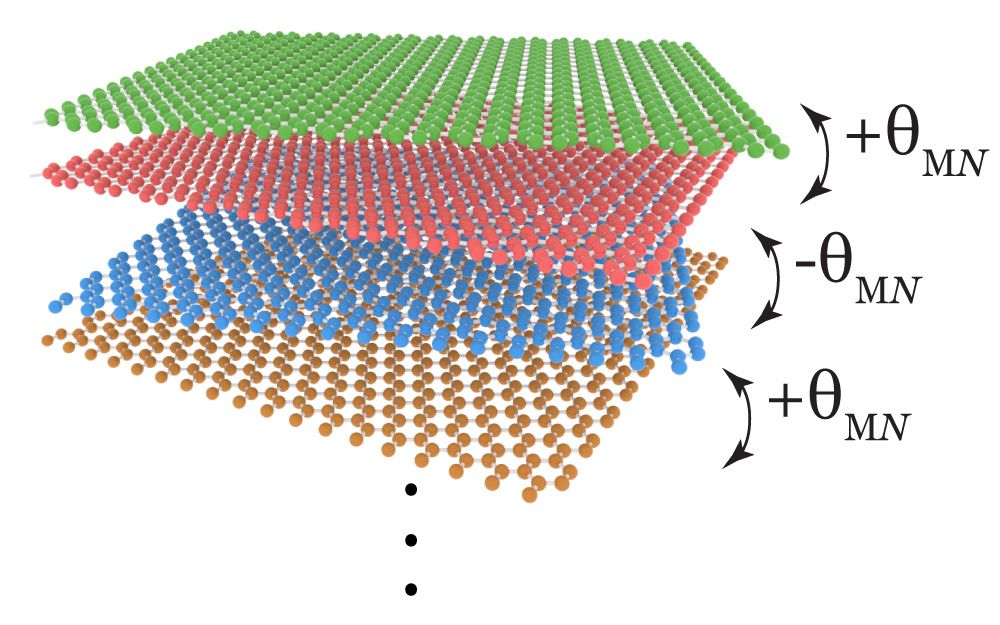Superconducting Graphene: Exploring Twisted Innovations
Superconducting graphene represents a groundbreaking advancement in materials science, offering a unique glimpse into the future of quantum technology. Researchers have discovered that twisted graphene, a configuration involving multiple layers of graphene arranged with slight angular displacements, exhibits remarkable superconducting properties, challenging our understanding of traditional superconductors. This innovative material holds the potential to revolutionize lossless power transmission, enabling efficient energy transfer without resistance, which could lead to significant economic and environmental benefits. Moreover, superconducting graphene could play a pivotal role in quantum computing and the development of advanced energy-efficient detectors, enhancing our ability to explore the cosmos. As scientists continue to unlock its secrets, the possibilities of superconducting graphene are as vast as the universe itself.
The exploration of graphene’s unique structural properties sheds light on its behavior as a superconductor, particularly when manipulated through twists at the atomic level. This innovative approach, often referred to as twisted graphene, reveals how slight alterations in layer alignment can result in extraordinary electronic characteristics. The implications for superconductors are substantial, with potential applications ranging from seamless energy transmission to groundbreaking advancements in quantum mechanics. Researchers are keenly interested in the role these materials might play in creating highly sensitive detectors that consume minimal power while maximizing efficiency. As our understanding deepens, the promise of these advanced materials could dramatically reshape technology and energy solutions in the coming years.
The Revolution of Superconducting Graphene in Modern Physics
Superconducting graphene has emerged at the forefront of material science, capturing the attention of physicists and engineers alike. This remarkable form of graphene, which exhibits superconductive properties when twisted at a specific angle, is unlocking new frontiers for energy applications. The unique structural configuration minimizes resistance and facilitates the flow of electricity, signaling a potential breakthrough in lossless power transmission. By embracing these quantum properties, researchers are poised to innovate energy-efficient technologies that could transform our energy consumption patterns.
The intriguing behavior of superconducting electrons in twisted graphene is not just a fleeting novelty; it lays the groundwork for advancements in numerous scientific domains. Researchers have already noted how this material could impact fields such as quantum computing, where high-speed processing and low-energy consumption are paramount. By offering a platform for the development of next-generation superconductors, twisted graphene could very well change how we approach computational tasks, enabling more efficient and powerful systems.
Frequently Asked Questions
What is superconducting graphene and its significance in quantum computing?
Superconducting graphene refers to specially arranged layers of graphene that exhibit superconductivity, enabling lossless electrical conduction. Its unique properties, particularly in twisted bilayer configurations, are significant in quantum computing as they can facilitate the creation of qubits, leading to enhanced computational power and efficiency.
How does twisted graphene enable lossless power transmission?
Twisted graphene demonstrates superconducting behavior that allows it to transmit electricity without resistance. This property is crucial for lossless power transmission, making it a potential game-changer for energy-efficient technology, including electric grids and transportation systems.
What role does superconducting graphene play in the development of energy-efficient detectors?
Superconducting graphene possesses the potential to create energy-efficient detectors for applications like space exploration. Its sensitivity and minimal power requirements make it suitable for detecting low levels of light in the near vacuum of space, offering high resolution with reduced energy consumption.
Why are electrons in twisted graphene capable of superconductivity?
Electrons in twisted graphene can exhibit superconductivity due to unique interaction mechanisms at low temperatures. These mechanisms involve electron pairing through a ‘glue’ force, enabling them to flow without energy loss, differing from traditional superconductors like aluminum.
What innovative techniques are researchers using to study superconducting graphene?
Researchers are employing microwave technologies to study the resonant vibrations of superfluid electrons in twisted graphene. By measuring frequency shifts in microwaves interacting with these electrons, scientists can gain insights into the pairing mechanisms that facilitate superconductivity.
What potential applications arise from research on superconducting graphene?
Research on superconducting graphene opens up a range of applications, including advancements in quantum computing, creation of high-efficiency power transmission systems, development of levitating transportation technologies, and innovative energy-efficient detectors for various fields such as space exploration.
| Key Points |
|---|
| Superconducting graphene allows lossless power transmission, new quantum computing capabilities, and efficient space exploration detectors. |
| Discovered through twisted layers of graphene, showing unconventional superconducting behavior. |
| Research involves measuring superconducting electrons through microwave technology for better understanding. |
| Findings may link superconductivity in twisted graphene with other two-dimensional materials. |
| Current applications still in development, but potential for future innovations in various tech sectors. |
Summary
Superconducting graphene presents exciting advancements in material science and physics, showcasing unique properties that could revolutionize power transmission and quantum computing. By unraveling the mysteries of electron pairing in twisted graphene, researchers are paving the way for energy-efficient technologies that could transform the future of various industries, including space exploration. With further exploration and understanding, superconducting graphene holds the potential to unlock groundbreaking applications that we are only beginning to imagine.
